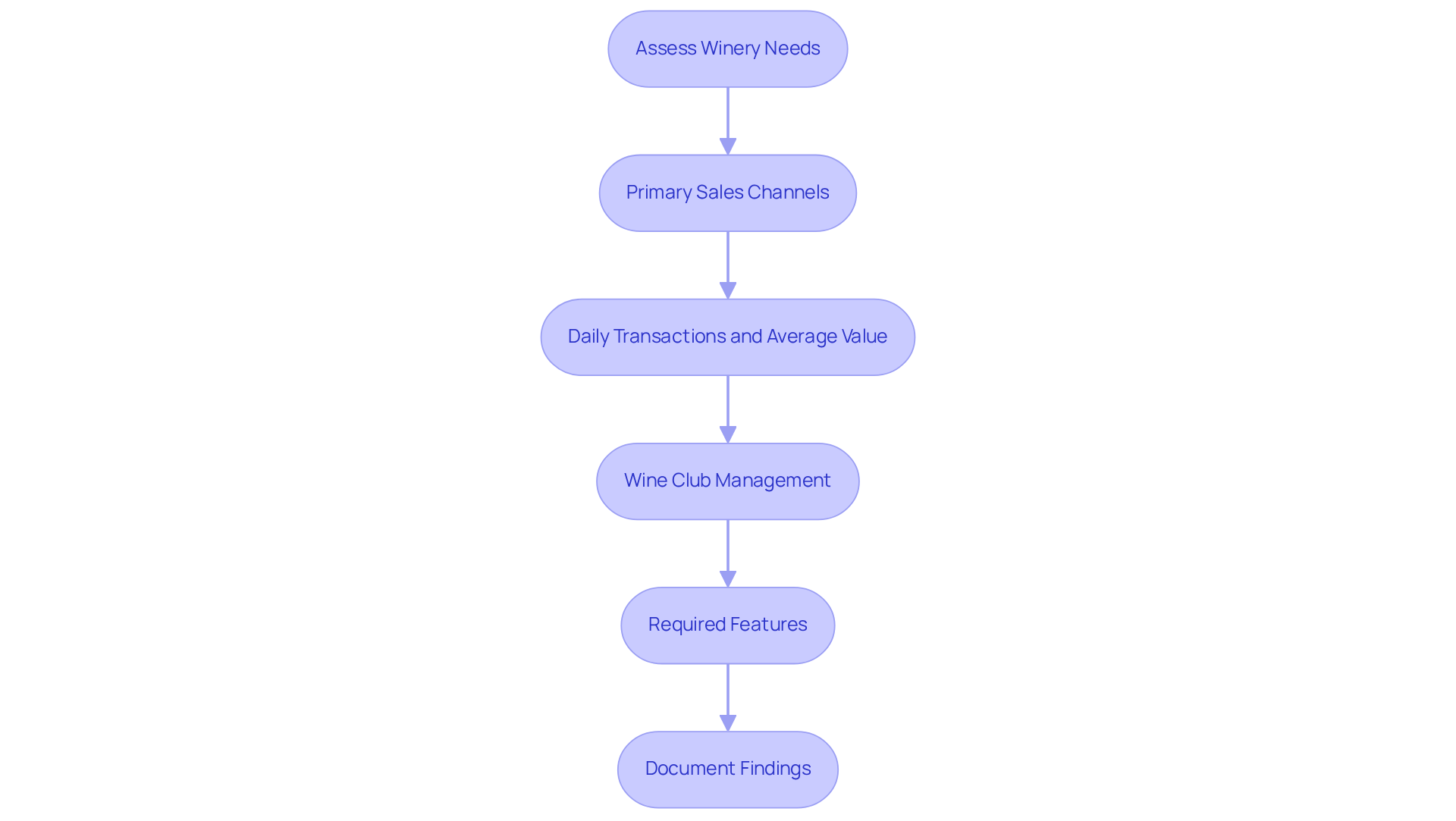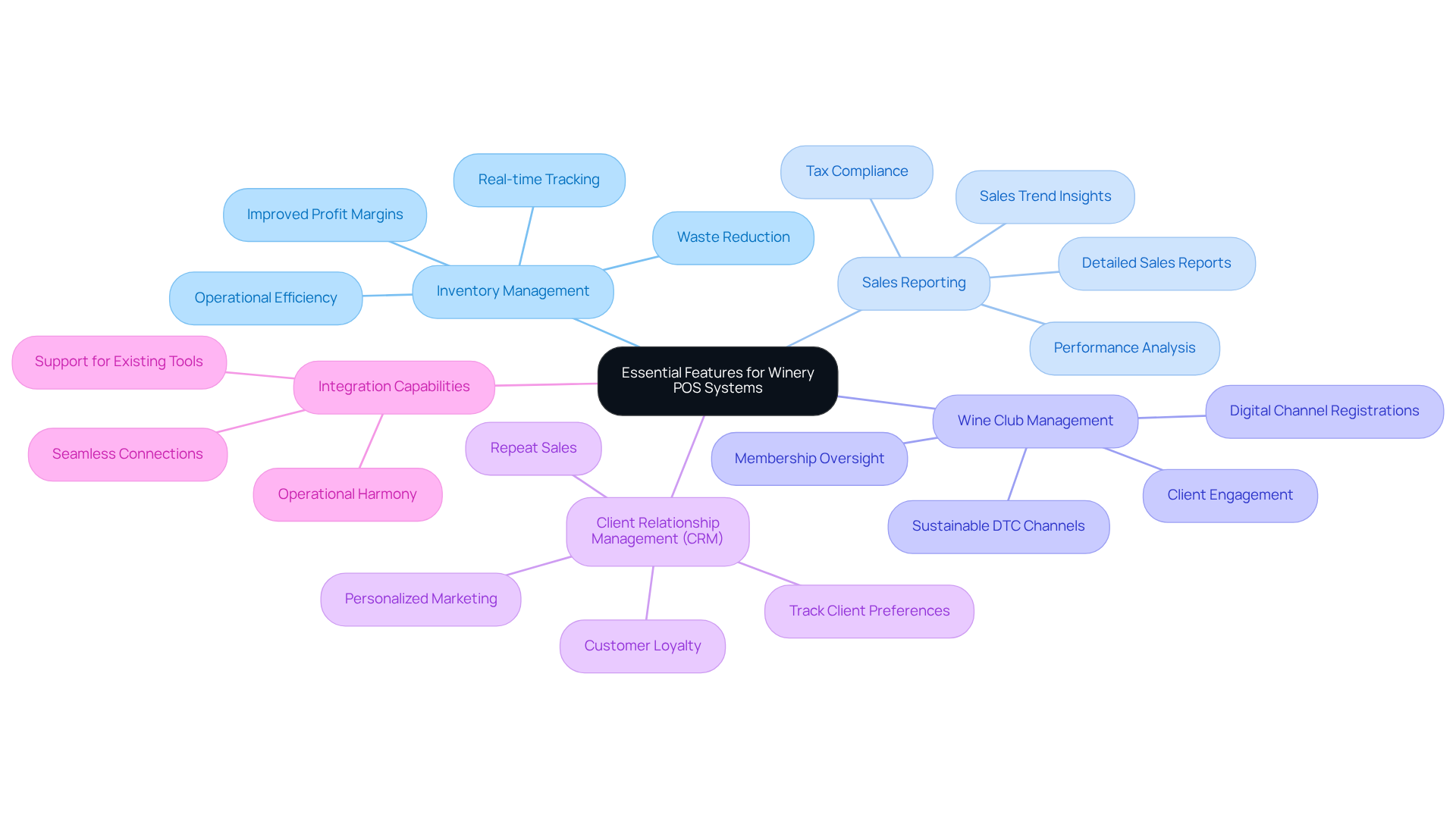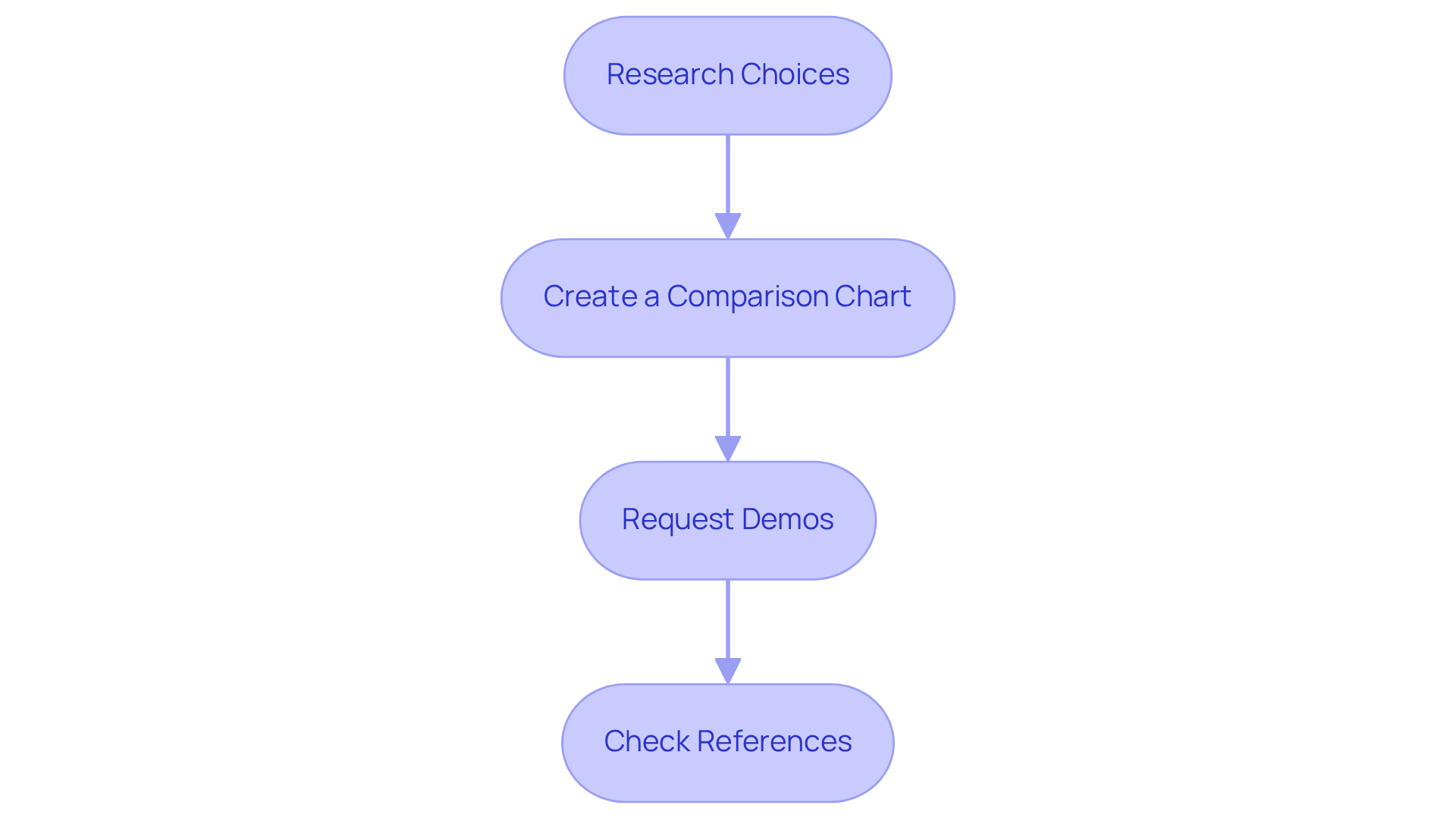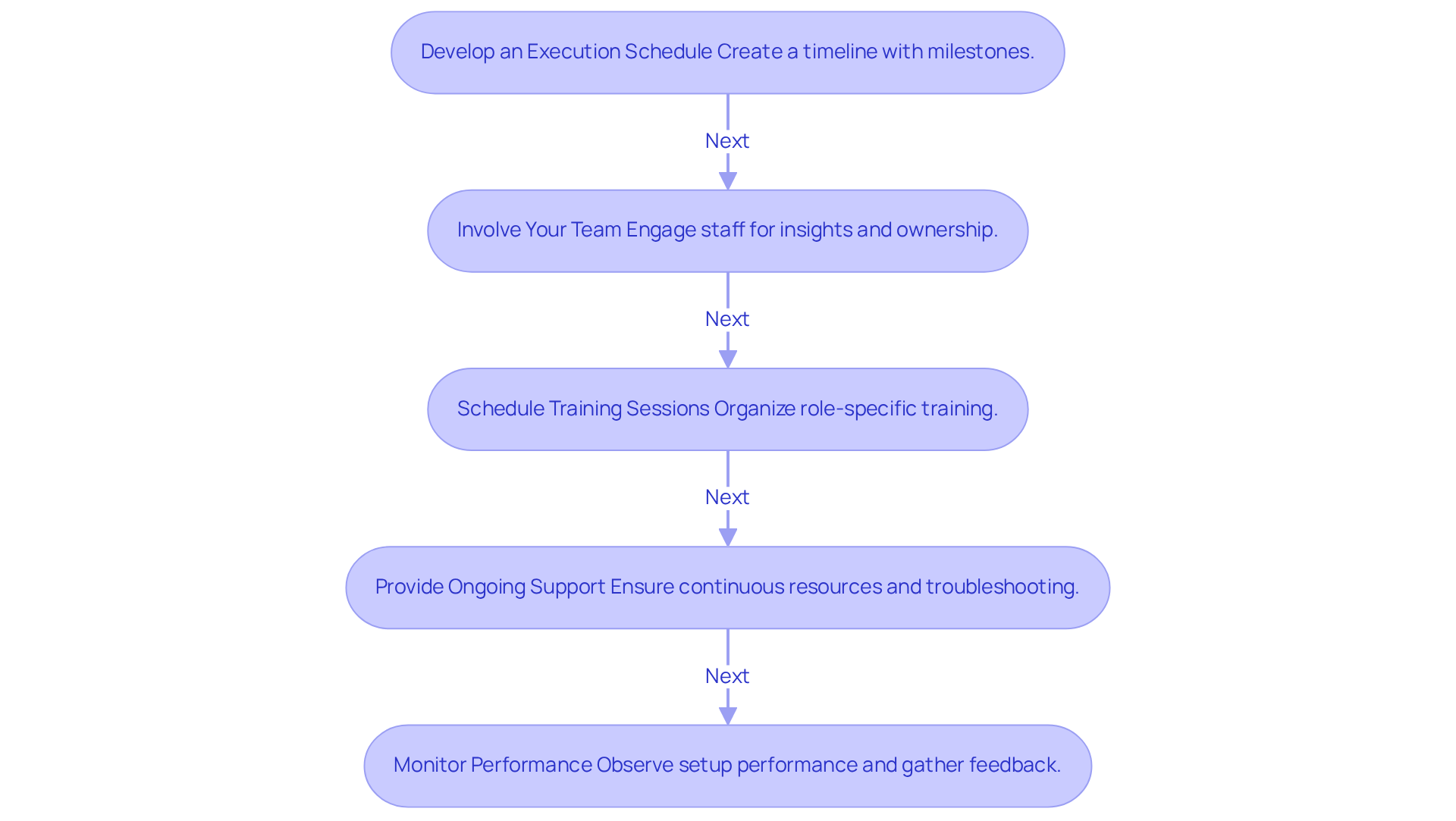Overview
Selecting the right winery point of sale (POS) system is crucial for your business's success. To achieve this, it is essential to assess your winery's unique needs. Start by evaluating critical features that will support your operations.
- Compare the available systems on the market.
- Plan for effective implementation and training to ensure a smooth transition.
This article outlines a systematic approach that emphasizes understanding operational requirements and prioritizing features such as:
- Inventory management
- Customer relationship management (CRM)
Furthermore, ensuring staff engagement during the transition is vital to maximizing efficiency and enhancing customer satisfaction.
Introduction
Selecting the right point of sale (POS) system is a pivotal decision for wineries striving to enhance operations and elevate customer experience. With a plethora of options at their disposal, it is essential to comprehend the unique requirements of a winery—ranging from inventory management to wine club integration. As the wine industry continues to evolve, vineyard owners must consider how to choose a system that not only addresses their current needs but also fosters future growth. This guide delineates the essential steps to navigate the selection process, empowering wineries to optimize operations and drive success.
Identify Your Winery's Unique Needs and Goals
Begin by conducting a thorough assessment of your establishment's current operations. Consider these critical questions:
- What are your primary sales channels—tasting room, online, or events?
- How many transactions do you process daily, and what is the average transaction value?
- Do you have a wine club, and how do you effectively manage memberships?
- What specific features do you need, such as inventory tracking, customer management, or reporting capabilities?
Document your findings meticulously to create a clear picture of your establishment's needs and goals. This foundational understanding will assist you in selecting a POS solution that not only meets your current requirements but also supports future expansion.

Evaluate Essential Features for Winery POS Systems
When evaluating winery point of sale systems, it is crucial to prioritize essential features for success.
-
Inventory Management: A robust POS must offer real-time tracking of wine inventory, encompassing bottles, cases, and merchandise. Effective inventory management is vital due to the delicate nature of wine production, which requires precise timing and storage conditions. By implementing best practices in inventory management at the winery point of sale, producers can enhance operational efficiency, reduce waste, and ultimately improve profit margins, which contributes to predictable DTC revenue.
-
Sales Reporting: The system must provide detailed sales reports to facilitate performance analysis and informed decision-making. Precise record-keeping aids financial reporting and tax compliance, assisting businesses in identifying eligible deductions and credits, thus reducing the risk of errors during audits. This capability is essential for understanding sales trends and optimizing revenue generation strategies.
-
Wine Club Management: For vineyards with wine clubs, overseeing memberships, renewals, and client communications is vital. With 27% of new wine club registrations coming from digital channels, implementing a winery point of sale that simplifies these processes can improve client engagement and retention. By applying effective strategies to convert casual purchasers into devoted club members, vineyards can establish sustainable direct-to-consumer channels that promote steady growth.
-
Client Relationship Management (CRM): A built-in CRM feature allows wineries to track client preferences and purchase history, which is crucial for personalized marketing efforts. This capability can lead to improved customer loyalty and repeat sales, further supporting the goal of generating predictable DTC revenue.
-
Integration Capabilities: Ensure the POS solution can seamlessly connect with your existing e-commerce platform and other software tools. This integration is essential for preserving operational efficiency and ensuring that all components function harmoniously, ultimately supporting the aim of creating sustainable direct-to-consumer channels.
By concentrating on these attributes, vineyards can select a POS solution that not only fulfills their operational requirements but also promotes long-term expansion and customer contentment.

Compare Available POS Systems and Their Offerings
To effectively compare POS systems tailored for wineries, it is crucial to follow these essential steps:
-
Research Choices: Begin by compiling a list of POS solutions specifically designed for vineyards, such as OrderPort, WineDirect, and KORONA POS. Each platform offers unique features that cater to the specific needs of the wine industry, including winery point of sale, inventory management, compliance tracking, and wine club integration. Notably, KORONA POS provides case-based inventory management, which is an essential capability for winery point of sale.
-
Create a Comparison Chart: Develop a comparison chart that clearly outlines the features, pricing, and customer satisfaction ratings for each system. This visual tool will aid in identifying which frameworks align best with your operational needs and budget. For instance, KORONA POS is recognized for its adaptability and comprehensive reporting features, while OrderPort excels in mobile functionality and e-commerce integration. Moreover, winery point of sale solutions facilitate compliance and reporting for alcohol sales, which vary by location, making this a critical factor in your selection process.
-
Request Demos: Contact vendors to arrange demonstrations of their solutions. Engaging with the software firsthand will provide valuable insights into the user interface, functionality, and overall ease of use. Many vineyards have indicated that practical experience significantly influences their final decision. Additionally, consider the importance of customer support and ongoing assistance, as these elements can greatly impact your experience with the platform.
-
Check References: Reach out to other vineyards to gather feedback on their experiences with the options you are evaluating. Insights from peers can reveal important details regarding reliability, support, and the overall effectiveness of the POS solution in enhancing vineyard operations. Incorporating testimonials from vineyard owners about their experiences can bolster credibility and provide a personal perspective in your decision-making process.
By meticulously comparing available options and leveraging insights from industry peers, you can select a POS solution that not only fits your budget but also optimizes your winery's operations, ultimately driving growth and enhancing customer satisfaction.

Plan for Implementation and Staff Training
To ensure the successful implementation of your new POS system, it is imperative to follow these essential steps:
-
Develop an Execution Schedule: Create a comprehensive timeline that encompasses critical milestones such as configuration, testing phases, and launch dates. This structured approach not only keeps the project on track but also ensures that all team members are fully aware of their responsibilities.
-
Involve Your Team: Actively engage your staff throughout the implementation process. Their insights can help identify potential challenges early on and foster a sense of ownership, which is crucial for successful adoption.
-
Schedule Training Sessions: Organize extensive training sessions tailored to the specific roles of your staff. Focus on the key functionalities of the POS platform that are most relevant to their daily tasks. Research indicates that effective training can lead to a 17% increase in productivity, underscoring the importance of this step in maximizing the benefits of the system. Furthermore, 74% of workers express a desire to acquire new skills to advance in their roles, highlighting the significance of ongoing training.
-
Provide Ongoing Support: After the initial training, ensure that continuous support is available. This may include resources for troubleshooting common issues and opportunities for further skill development. Continuous learning is essential, as it enables employees to adapt effectively to new technologies and processes. As Christopher Pappas aptly states, "An untrained employee finds it difficult to keep up, while a well-trained one works more efficiently and makes fewer mistakes."
-
Monitor Performance: Following implementation, closely observe the performance of the setup and solicit feedback from staff. This practice will assist in identifying areas for enhancement and ensure that the system is being utilized to its full potential.
By meticulously planning the implementation and training process, your winery can fully leverage the advantages of the new POS system, ultimately enhancing operational efficiency and customer satisfaction.

Conclusion
Choosing the right point of sale (POS) system for a winery is a pivotal decision that can significantly influence operational efficiency and customer satisfaction. By understanding the unique needs and goals of a winery, it becomes possible to select a POS solution that not only meets current requirements but also supports future growth. This strategic approach ensures that the chosen system aligns perfectly with the winery's vision and operational demands.
Throughout this guide, essential steps have been outlined to facilitate the selection process. From identifying specific operational needs and evaluating key features such as inventory management and CRM capabilities, to comparing various POS systems and planning for implementation, each aspect plays a crucial role in making an informed decision. Engaging staff in the process and providing comprehensive training further enhances the likelihood of a successful transition to the new system.
Ultimately, investing time and effort into choosing the right winery POS system can lead to improved operational efficiency, enhanced customer relationships, and sustainable growth. Wineries are encouraged to take a proactive approach—assess their needs, explore available options, and implement a system that not only meets their current demands but also positions them for future success in a competitive market.
Frequently Asked Questions
What should I do first to identify my winery's needs and goals?
Begin by conducting a thorough assessment of your establishment's current operations.
What critical questions should I consider during the assessment?
Consider questions such as your primary sales channels (tasting room, online, or events), the number of daily transactions and their average value, whether you have a wine club and how you manage memberships, and the specific features you need like inventory tracking, customer management, or reporting capabilities.
Why is it important to document my findings?
Documenting your findings is crucial as it creates a clear picture of your establishment's needs and goals, which will assist you in selecting a POS solution that meets your current requirements and supports future expansion.




